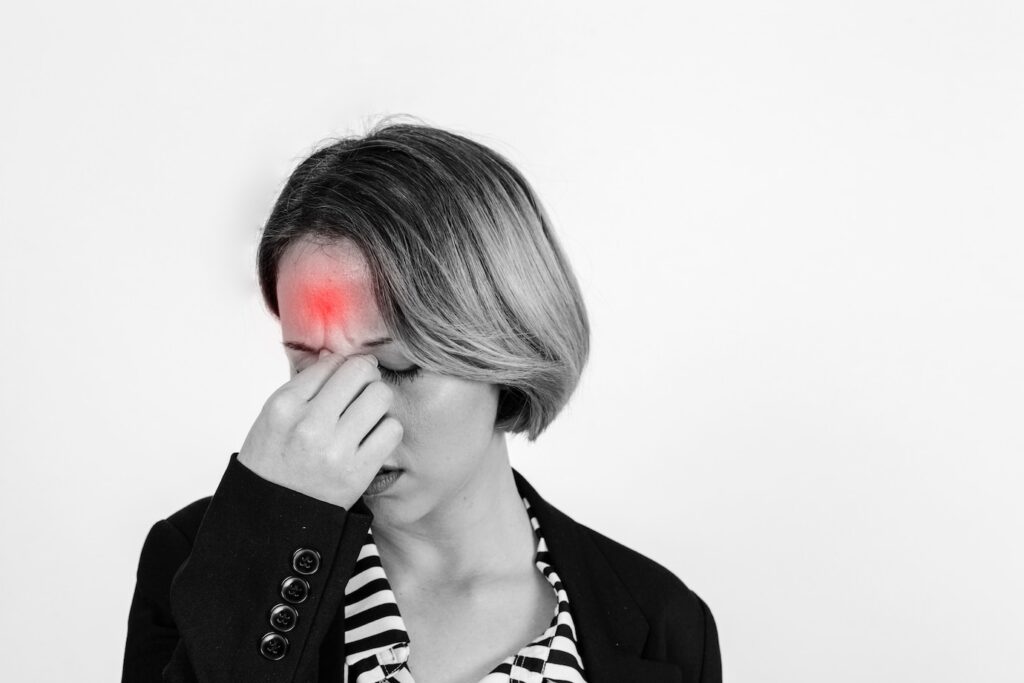Last updated on July 9th, 2025 at 06:36 pm

Intense, worsening headaches characterize migraine. It also shows symptoms such as nausea, vomiting, speech difficulty, numbness or tingling, and sensitivity to light and sound. Migraines can be hereditary and affect all ages. However, women are more prone to migraine than men. Sometimes migraines are considered simple headaches and not taken care of. This will eventually worsen the pain and make daily routine difficult to perform. So symptoms are needed to be understood to know whether it is migraine or just a headache. Symptoms of migraines may start one to two days before your problem. This is called the stage of the prodrome. Symptoms may include during this stage, including food cravings, exhaustion, weakness or low energy, constant yawning and hyperactivity, irritability, and neck rigidity. After this, headache along with Increased susceptibility to sound and light, nausea or vomiting, tiredness, dull pain on left or right or front or back, or temple region of your head.
There is not any well-known cause of migraine. Most researchers believe that migraine is caused by abnormal changes in substance levels produced naturally in the brain. Increasing the levels of these substances can cause inflammation. The inflammation causes blood vessels in the brain to swell and press close nerves to cause pain. Migraine is usually episodic in starting; however, due to negligence, it becomes chronic in many people. The difference between these two is, episodic migraines stay for an hour or two and once gone, then take several weeks or even months to come. On the other hand, chronic migraines last more and take place more often. Not taking care of frequent headaches can cause migraine to worsen, resulting in five to six attacks per year, it turns into two attacks per month, lasting for 8 to 10 days. Thus, instead of ignoring migraine, one should see why it is happening and seek remedies for medication to prevent it from worsening. Here are the ways you should try treating migraine.
1. Recognize the trigger factors and eliminate it:
Most of the migraines occur due to trigger factors. If you can control the trigger factor, then 70 % of migraines can be avoided. Trigger factors can be anything food, lights, weather, sleep deprivation, strong smell, alcohol, hunger, and so on. The most common trigger factors are foods such as chocolates, cheese, food preservatives, fish, certain meats, nut butter, and onion.
First of all, keep a migraine diary, and whenever you get migraine pain, write your schedule 2 to 3 days of pre-migraine schedule in it. This will help you to understand what triggers migraine as it varies from person to person. Once you find the trigger factor try to eliminate it. For example, many people who eat chocolates get migraine attacks, so avoid eating too many chocolates. Thus, the basic rule to prevent migraines is to identify and avoid triggering factors such as perfume or chocolate.
2. Stress management:
Stress and emotion can trigger a migraine headache. So it is essential to manage stress to avoid migraines. Migraine is linked to many different types of stress or intense emotions. Some of the most prominent examples are anxiety, excitement, tension, and shock. During strain, hormonal imbalance occurs such change triggers a headache. First, it looks like a tension headache, and then it turns into a migraine. Thus, stress management is necessary for daily life to keep migraines at bay. On should,
• Have health food.
• Get 30 minutes a day’s workout.
• Try techniques of relaxation such as meditation.
• Get enough sleep.
• Take support from families and friends.
• To ease your tension, smile and laugh.
3. Stay hydrated:
Drink lots of water to keep migraines away. Dehydration is not directly related to migraine, but it can cause headaches and having migraine issues will trigger the attacks. The brain will contract or shrink due to fluid losses temporarily when the body is dehydrated. This mechanism pulls the brain off the skull and causes pain and headache. This, eventually, will convert dehydration headache into a migraine. So, it is essential to stay hydrated.
• Drink a minimum of 2.5 L water per day
• Increase fluid intake which includes minerals
• If you suffer from too much perspiration then increase fluid intake to 3 to 4 L.
4. Be proactive:
One of the easiest ways to deal with your migraine is to prevent it before it starts. If you know that a migraine might be in the forecast, try to stop it. When pain is too severe, make sure you take your prescription drugs or OTC drug. Do not just bear it and let it go on its own otherwise, it will worsen the situation.
5. Consult your doctor:
Many factors like menstruation, genes, age, some medications, weather change, menopause, are not avoidable. So, to prevent the migraine from such trigger factors, talk to your doctor. He will prescribe you medicine according to your symptoms and factors and take them exactly as prescribed. Also, he will advise some precautions, follow them religiously. Consult your doctor periodically. Take a migraine diary and show it to your doctor. Also, give a review on medication, whether it is helping in headache or not. Lastly, do not forget to ask about what to do if you miss a dose and how long you should take it.
Conclusion
Understanding and preventing your migraine causes, controlling your symptoms, following your doctor’s advice, and documenting any significant improvements as soon as they appear are usually the best outcome for people with migraines. Although migraine is untreatable, proper self-care and medication can help in relieving symptoms.